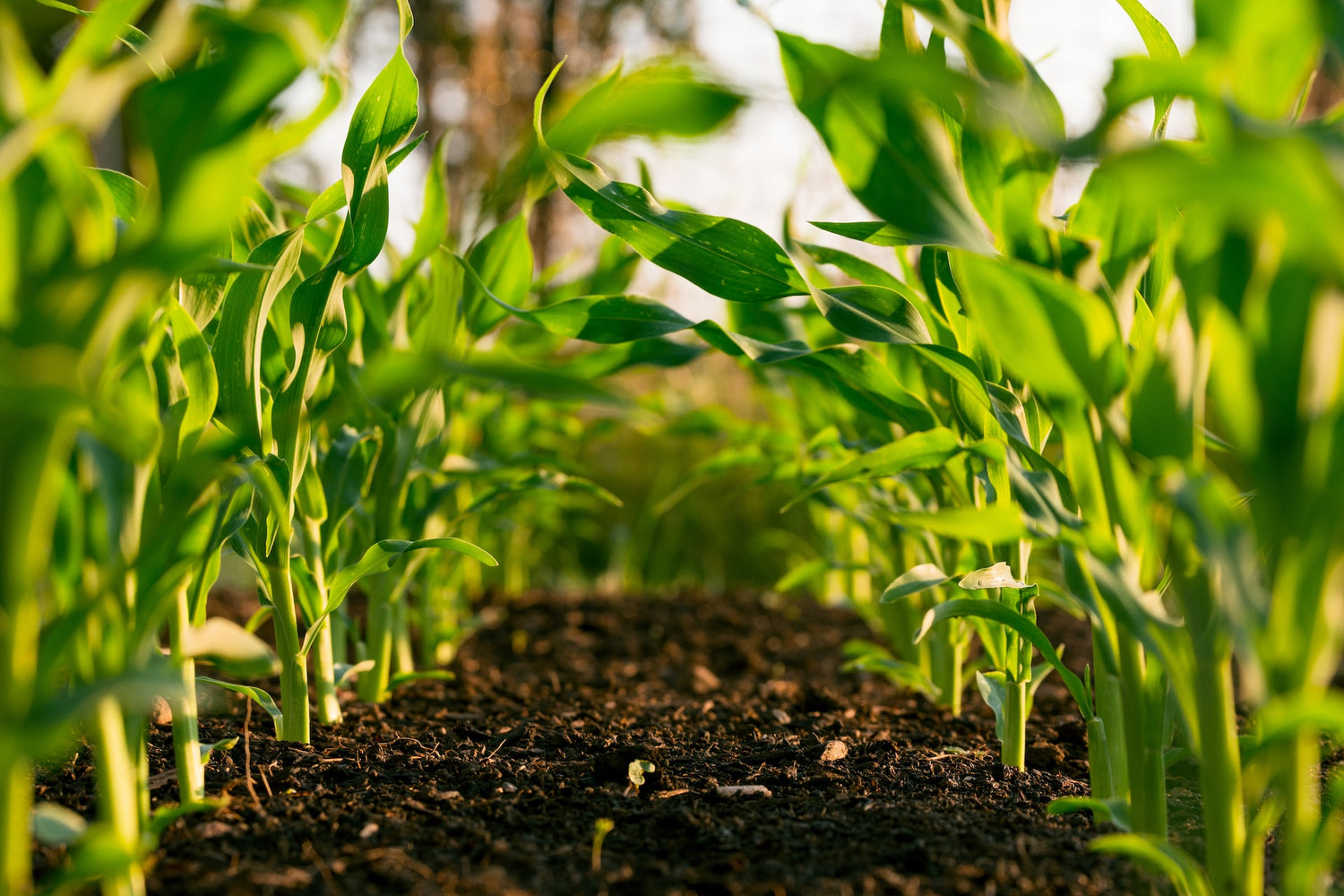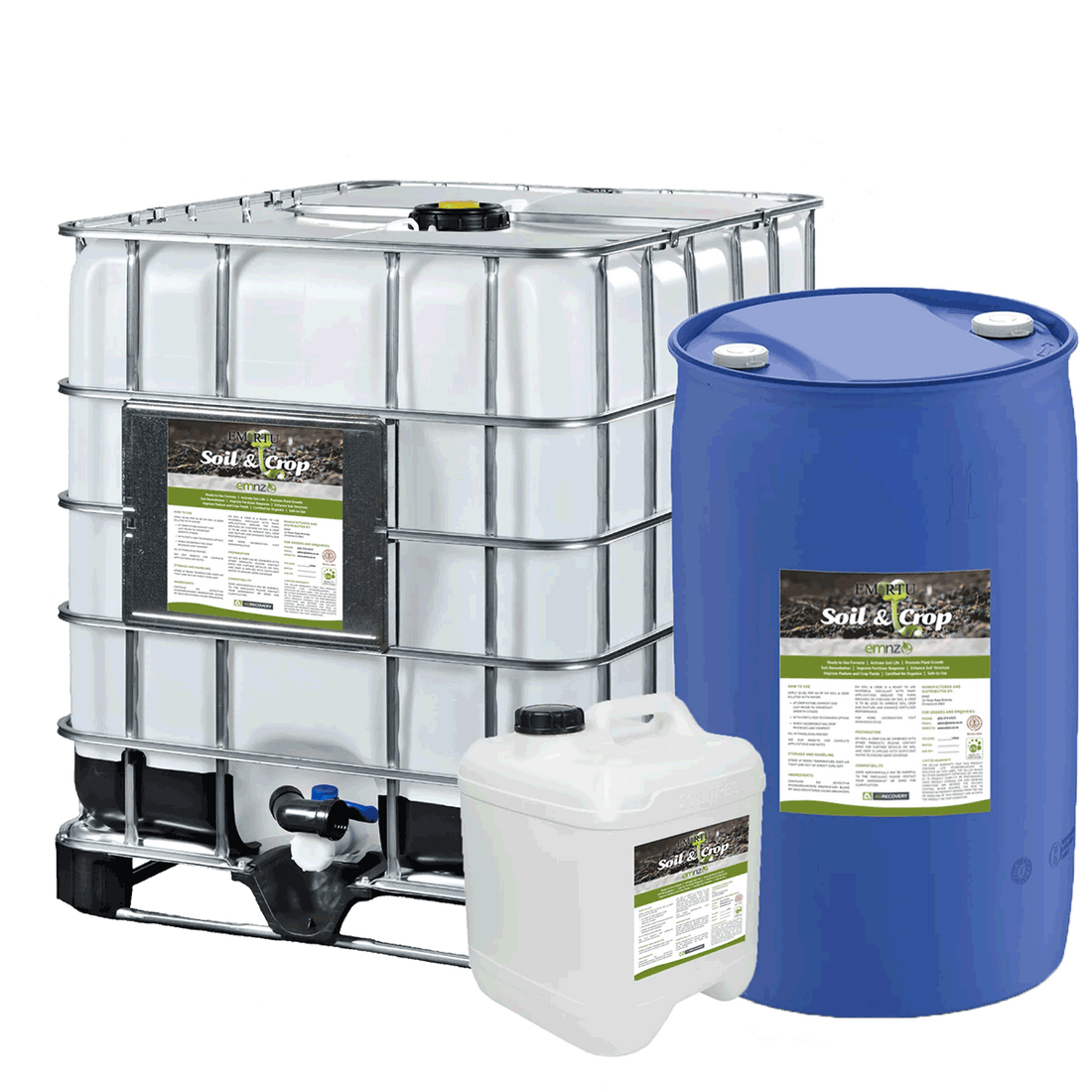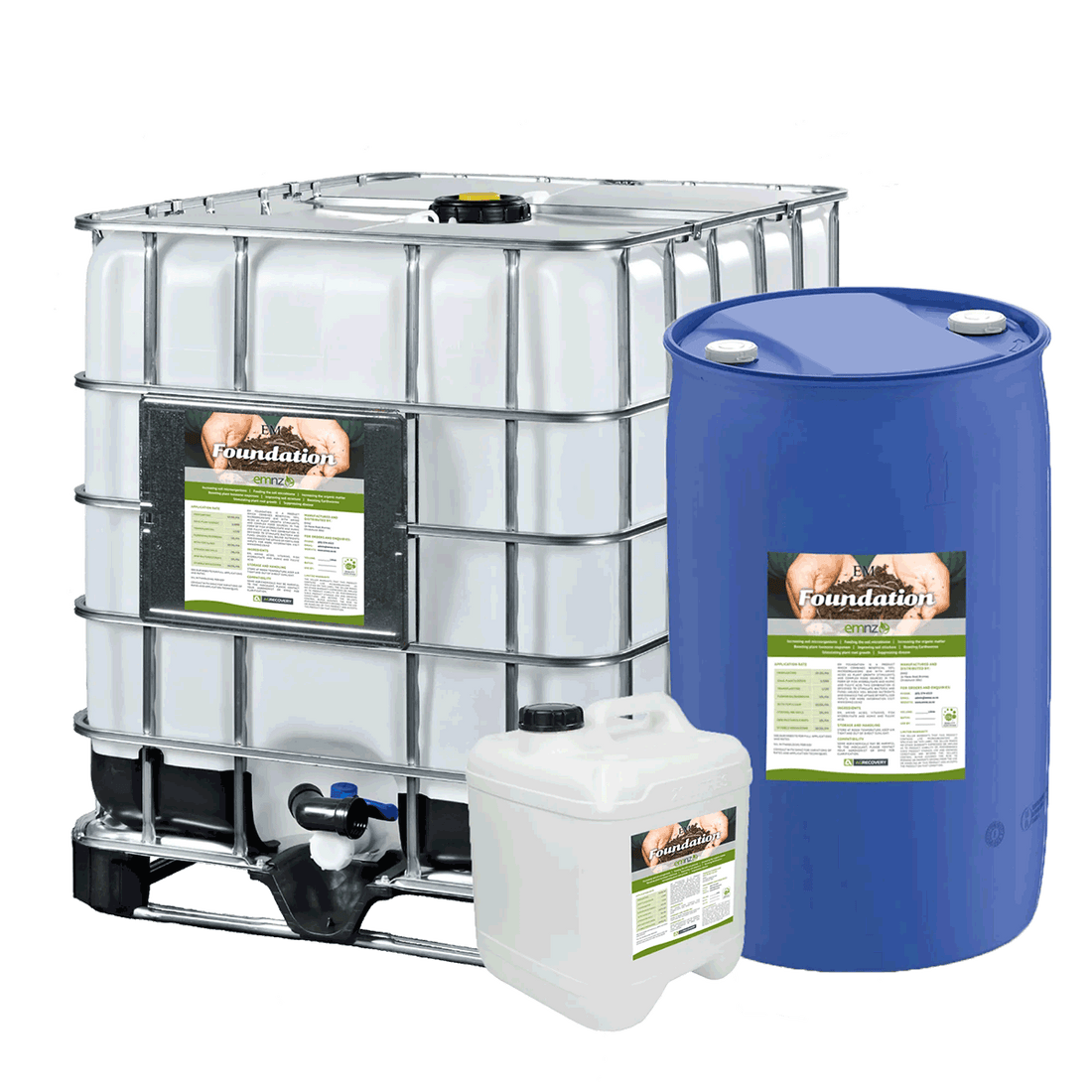EM™ works by getting the natural processes to function, the way nature intended by stimulating biological activity in the soil. Using EM will improve soil health and yields and enhance fertiliser performance.
EM™ will not only add to the microbial population, but will also stimulate resident microbes. This stimulation can lead to increasing the resident nitrogen fixation capacity directly through the increase of N fixing bacteria, and indirectly by increasing clover growth, increasing mycorrhizal activity and other fungal and earthworm activity.
EM™ will enhance growth and improve soil health through:
- Enhancing fertiliser inputs
- Fixing atmospheric nitrogen
- Converting organic matter to plant nutrients
- Decomposing organic residues
- Recycling soil nutrients
- Breaking down fertiliser compounds
- Improving root structures
- Breaking down pollutants in the soil
- Increasing earthworm numbers
- Reducing compaction issues
EM works firstly through effective organic matter recycling which builds humus, the food for your soil and plants. It will also enhance fertiliser and nutrient breakdown in the soil and uptake by plants, will give improvements in nitrogen fixation and stimulate micorrhyzal activity.
This has two main functions, firstly it creates better growing conditions and this leads to a stronger healthier plant. Secondly it provides competitive exclusion, which means that it out-competes pathogens for space, by inoculating the leaf surfaces with beneficial microbes. The cumulative effect of all of these functions is a higher yielding crop.
The graphs on the right show the impact EM can have on the yield of Fodder Beet.
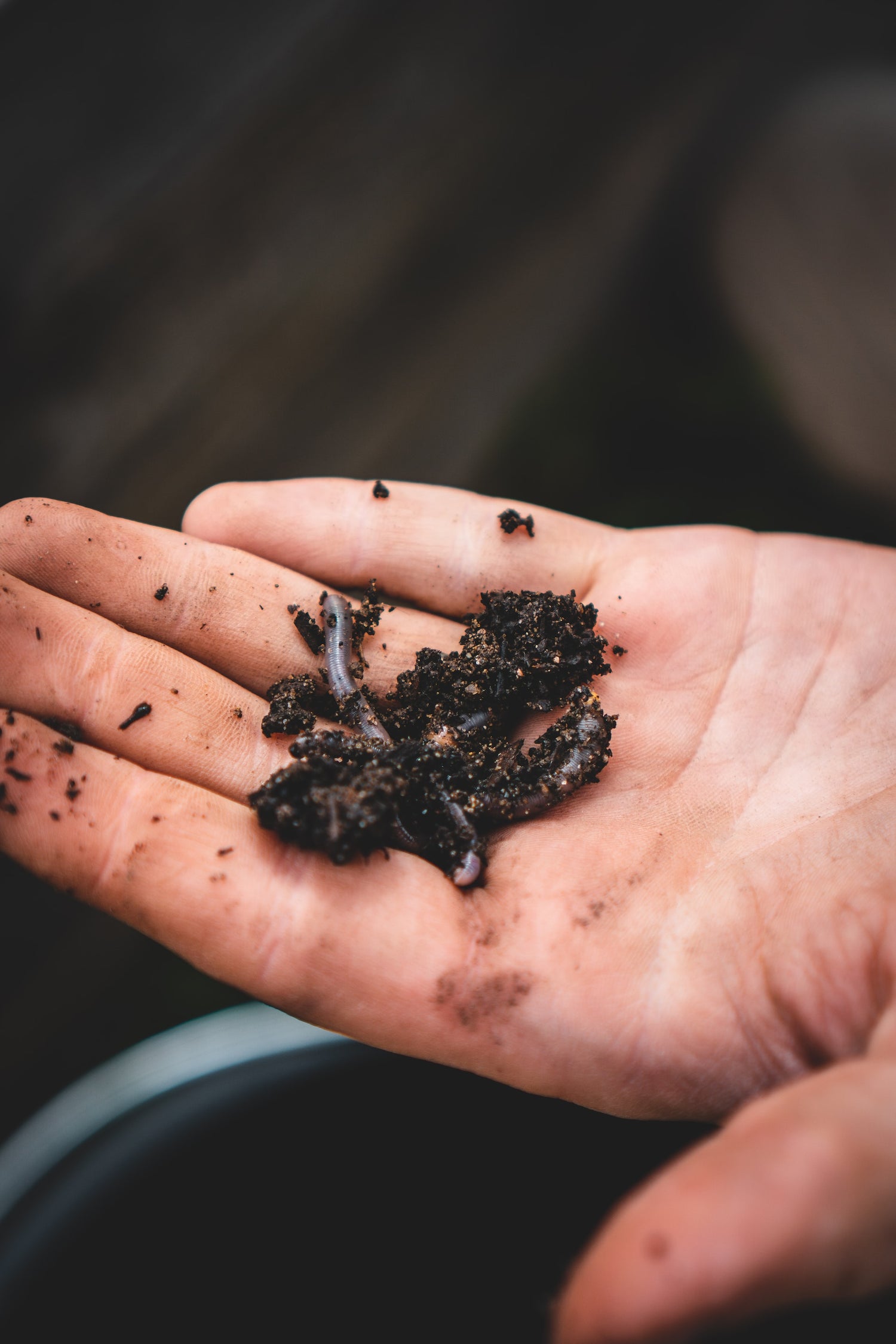
Improved Organic Matter Breakdown
EM™ will help the decomposition process of organic materials, and during fermentation will produce normally unavailable organic acids, such as lactic acid, acetic acid, amino acid, malic acid and bioactive substances and vitamins. A key ingredient in this process is organic matter which is supplied by pasture residuals, (dead matter) recycling crop residues, green manures and animal manure. In addition, this process leads to increased humus in the soil enhancing fertility and soil health. Earthworm numbers will also increase with the use of EM™ to further aid soil health and performance.
Enhancing fertiliser inputs
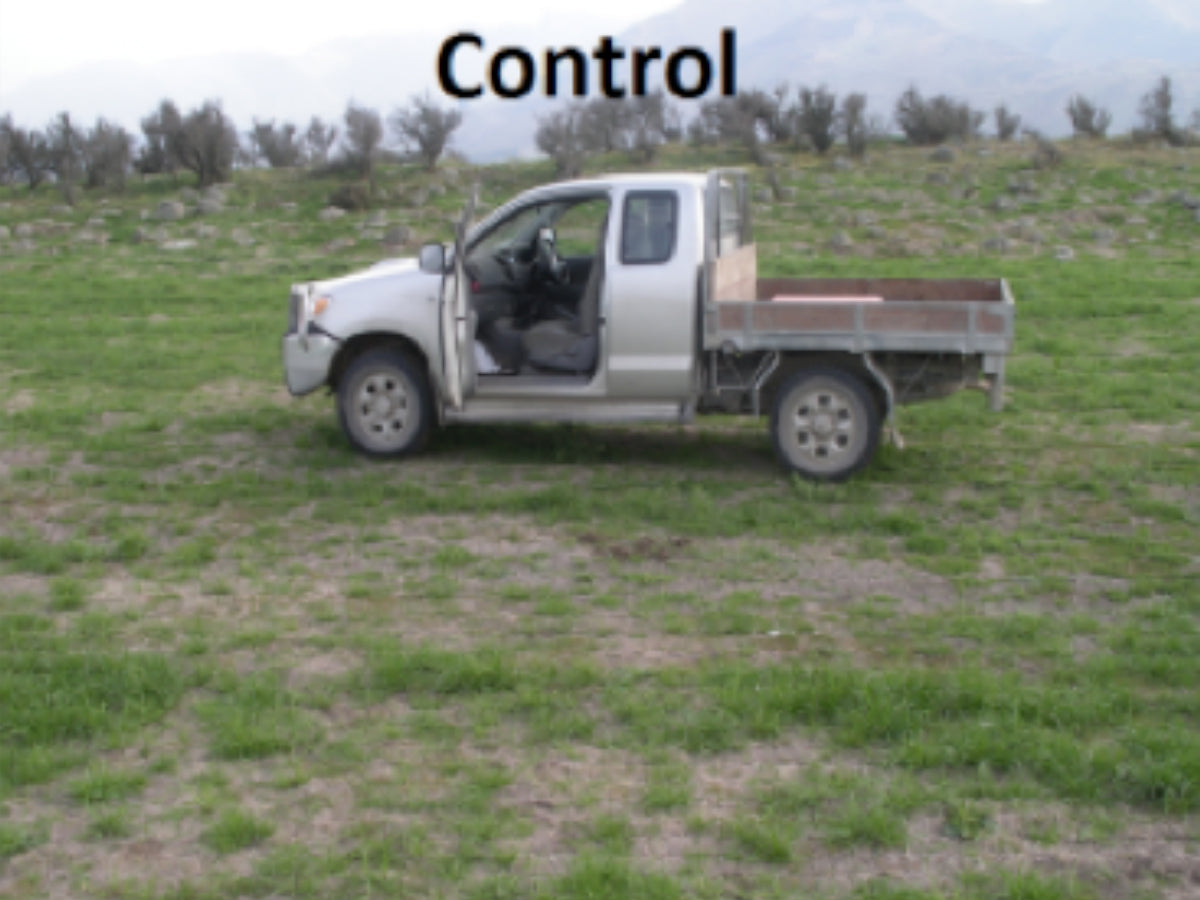
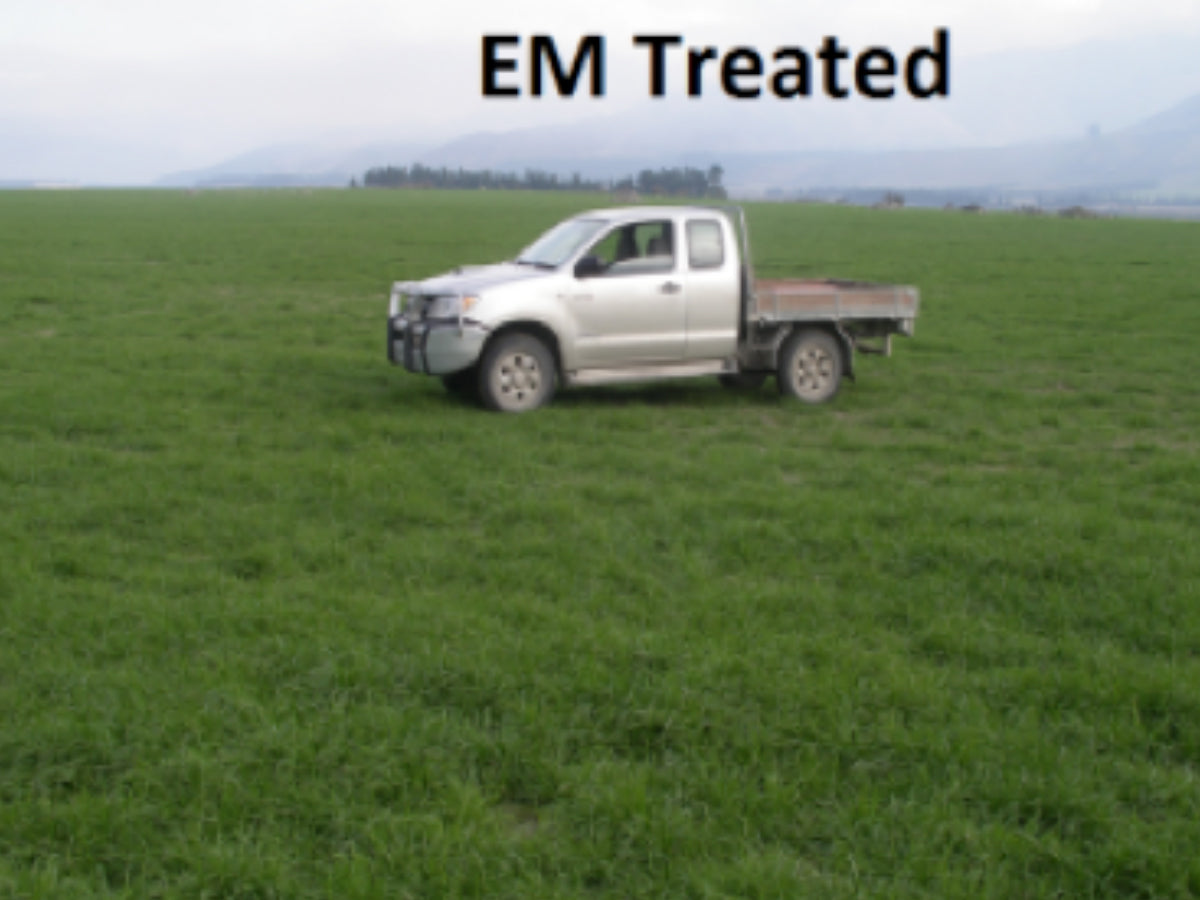
The microbes in EM™ will solubilise compounds both organic and inorganic that are largely unavailable to plants and make them available for uptake by the plants root system allowing the plant to put more energy into growth. In performing this important function the Microbes create a more efficient use of added nutrients, generating a better growth response from fertiliser inputs. Also, our research has demonstrated the ability to lower fertiliser use while still gaining the same yield. Research has shown the microbes in EM® stimulate Mycorrhizae and Trichoderma further enhancing nutrient uptake and the plants root system. EM™ works effectively with most fertiliser and can be sprayed on with most pesticides and herbicides decreasing your application costs.
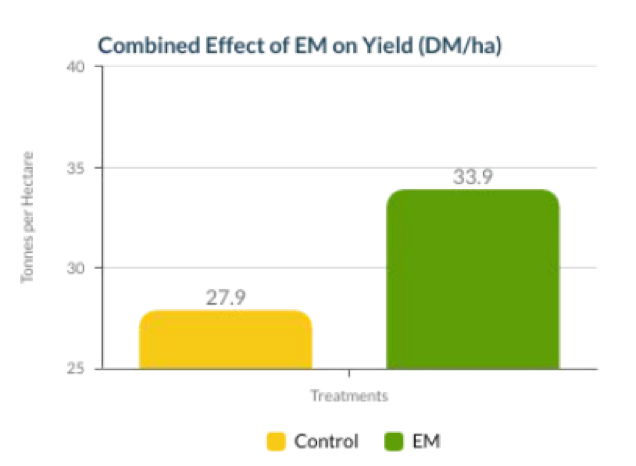
Improving yields with EM™
EM™ works firstly through effective organic matter recycling which builds
humus, the food for your soil and plants. It will also enhance fertiliser and nutrient breakdown in the soil and uptake by plants, will give improvements in nitrogen fixation and stimulate micorrhyzal activity.
This has two main functions, firstly it creates better growing conditions and this leads to a stronger healthier plant. Secondly it provides competitive exclusion, which means that it out-competes pathogens for space, by inoculating the leaf surfaces with beneficial microbes. The cumulative effect of all of these functions is a higher yielding crop.
The graphs on the right show the impact EM can have on yield.
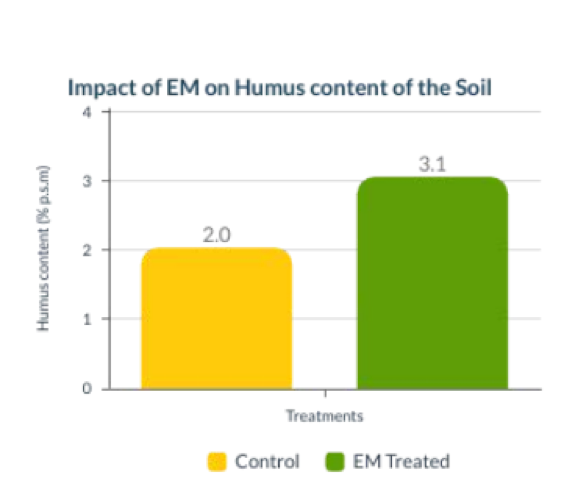
Building Soil Humus
EM™ efficiently breaks down organic matter into stable humus, a key component to aggregate formation, by reducing oxidative forces that primarily rob the soil of Carbon and Nitrogen in the form of methane and ammonium gases, respectively.
This is achieved from a reduction of available Hydrogen ions due to a
favourable change of organic acid composition and concentration in the soil. The result is that a greater amount of organic matter is converted to humus, aiding in aggregate formation.
Improved Root Structure
This was shows the difference between a paddock of clover treated with EM™ and one without. The main differences and the improved root structure and many nodules on the treated paddock. There was also a much better breakdown of organic matter in the soil.
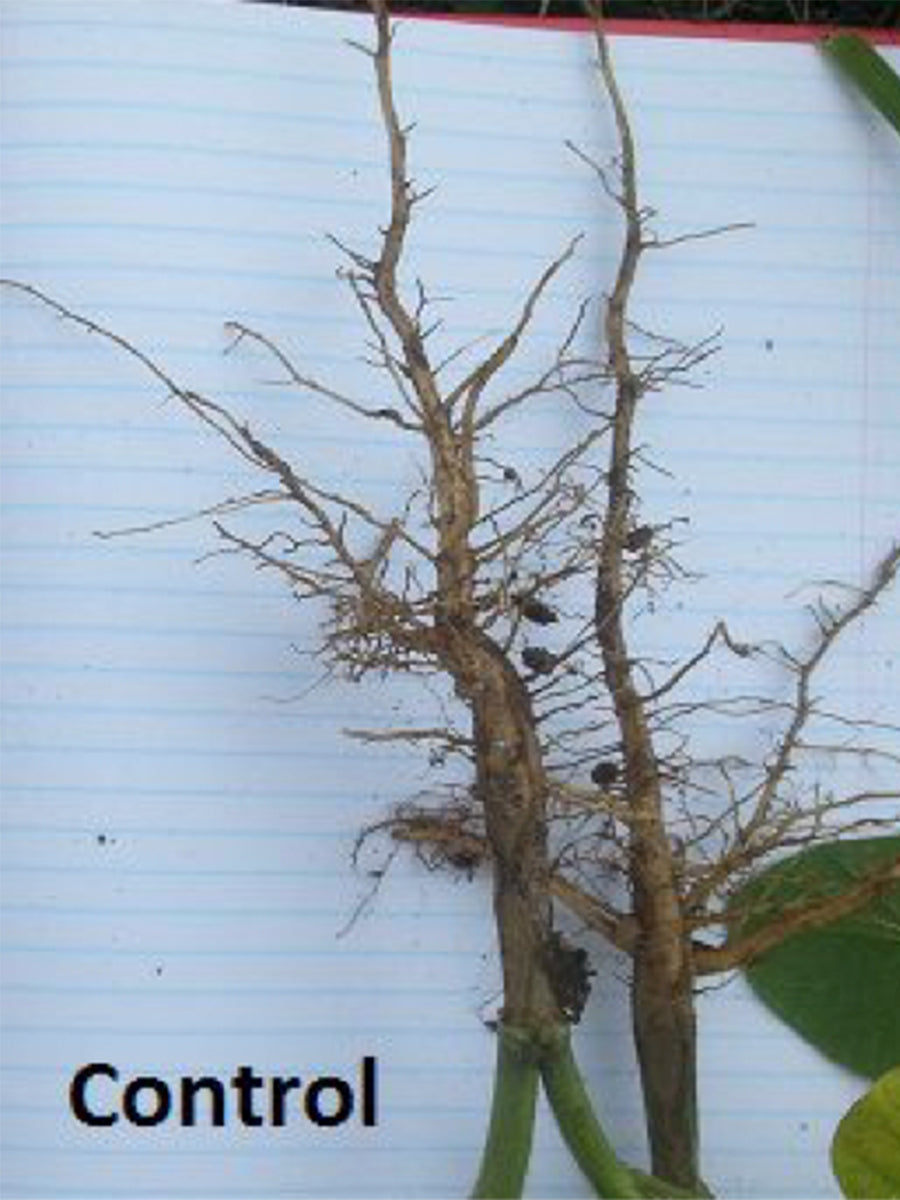
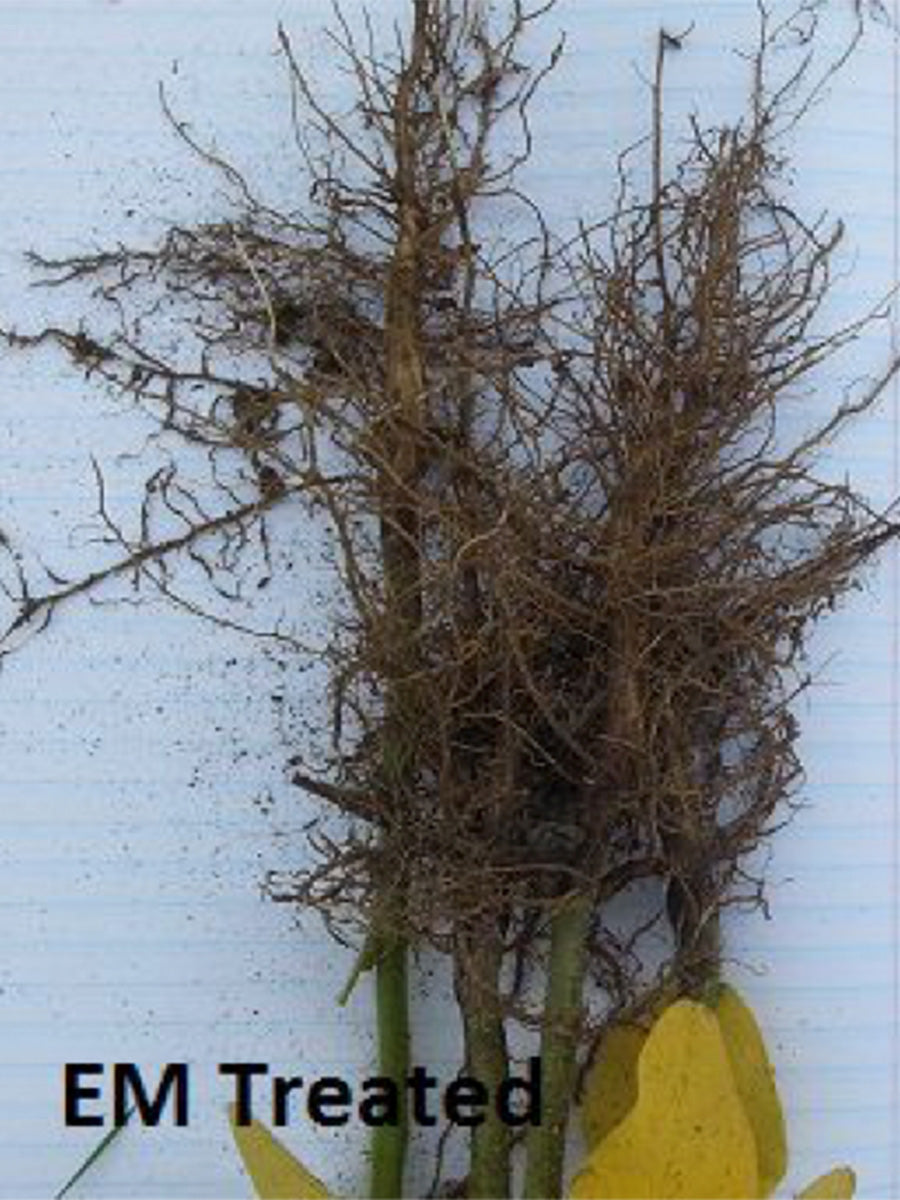
EM™'s Impact on Soil Compaction
EM™ will support the growth of other beneficial organisms like mychorrizae, worms, and insects already in your soil, bringing nature back into balance.
It will also produce lots of polysaccharides - glues that hold the soil together and hold in moisture, improving drought resistance.
A healthy soil and stimulated biological activity help build stable aggregate and soil structure. Increase aggregate stability prevents the pore spaces between the aggregates from collapsing during heavy, saturating rains and reduces compaction. Improved soil aggregate stability reduces soil erosion and run-off. Soils are better able to absorb and retain moisture, as well as cycle nutrients.
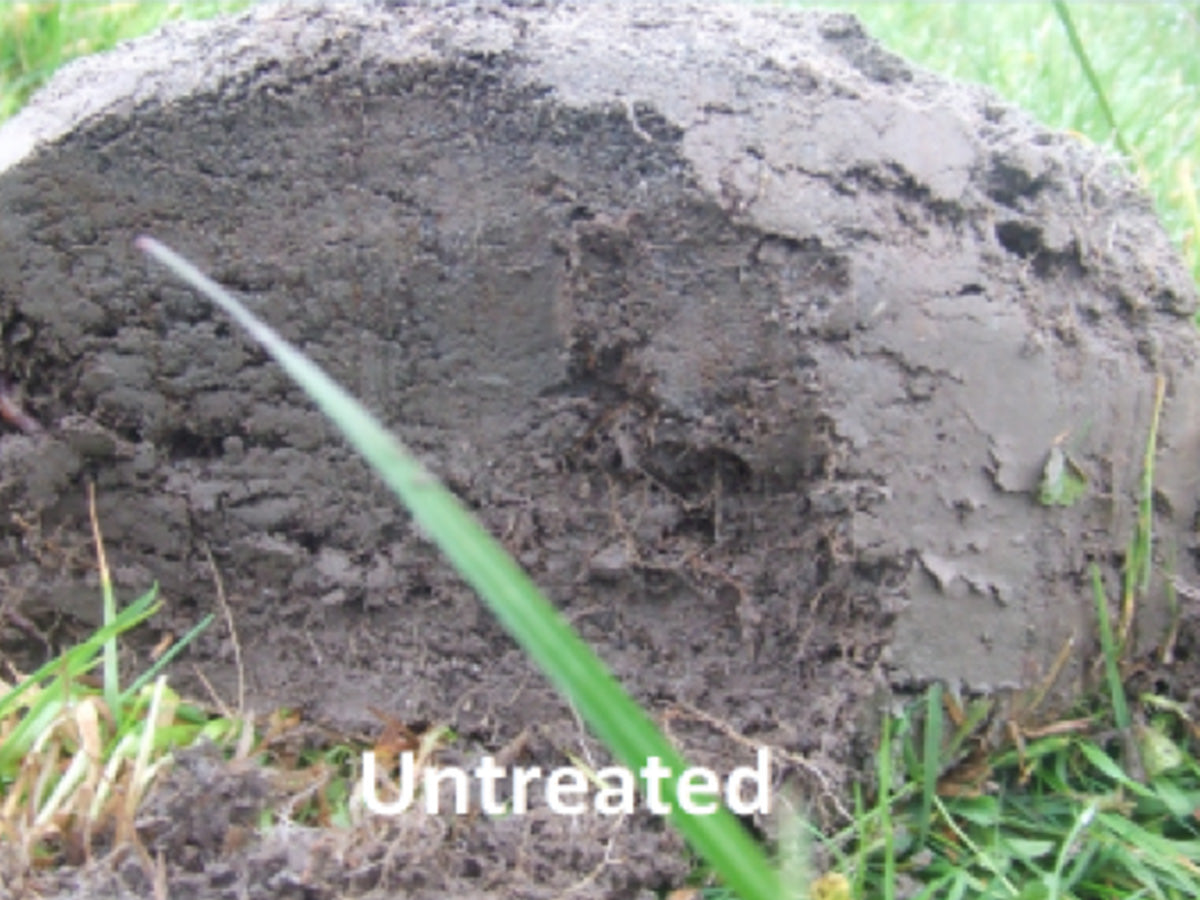
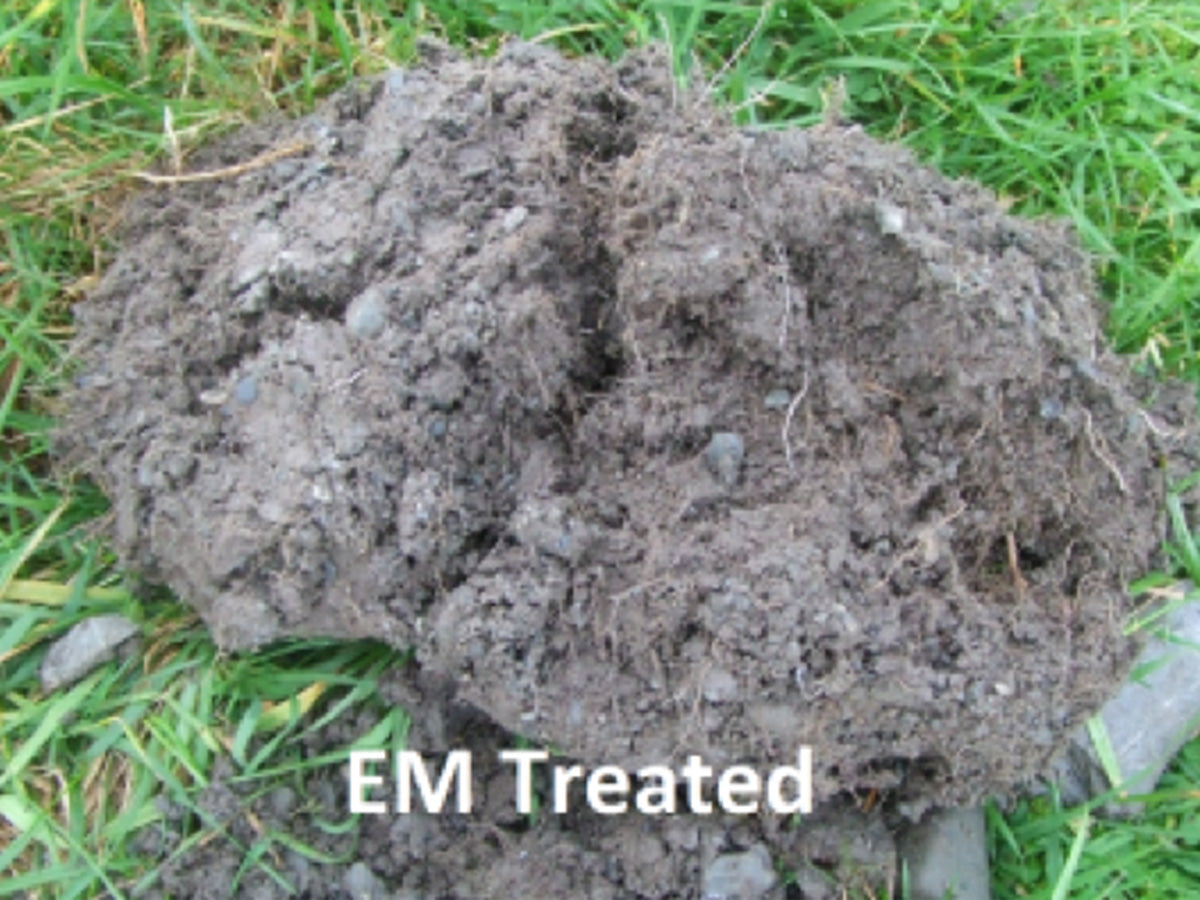
Shop EM™ for Agriculture
-
EM1 Concentrate
 EM1 Concentrate
EM1 Concentrate- Regular price
-
$31.05 $436.58 - Regular price
-
- Sale price
-
$31.05 $436.58
Quick view
-
EM™ Animal - Animal Probiotic
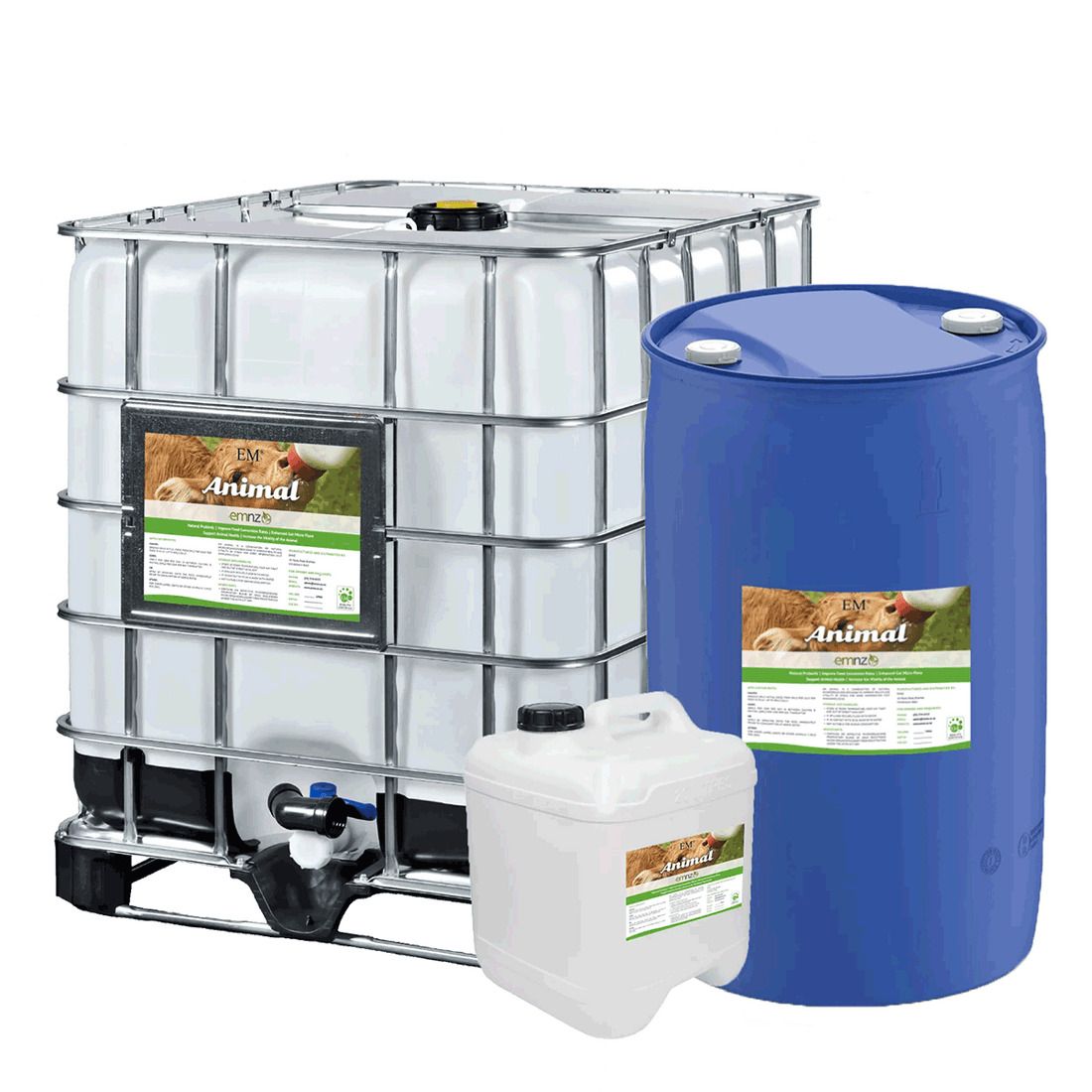 EM™ Animal - Animal Probiotic
EM™ Animal - Animal Probiotic- Regular price
-
$70.65 $145.20 - Regular price
-
- Sale price
-
$70.65 $145.20
Quick view
-
EM™ Foliar Enhance
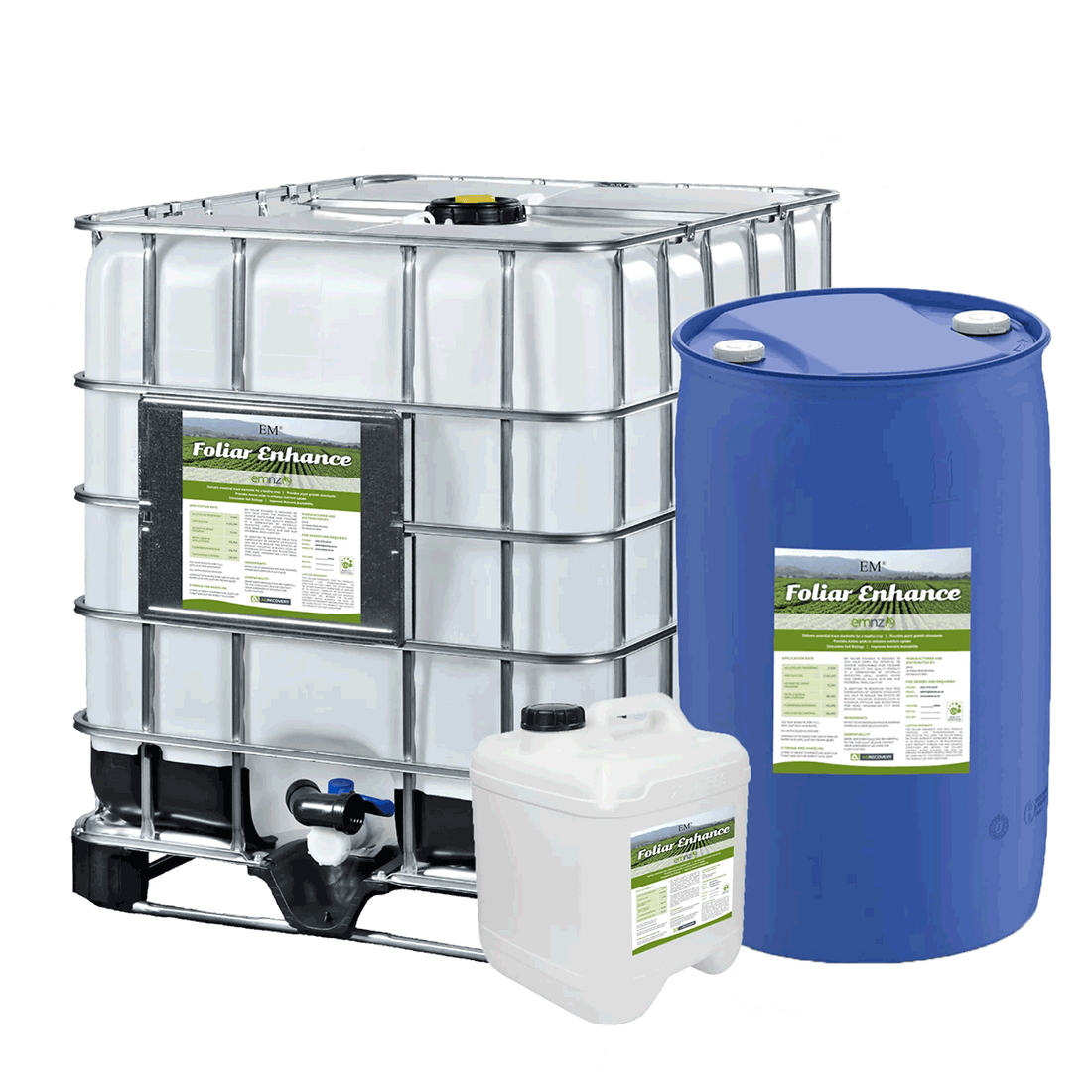 EM™ Foliar Enhance
EM™ Foliar Enhance- Regular price
-
$119.50 - Regular price
-
- Sale price
-
$119.50
Quick view


